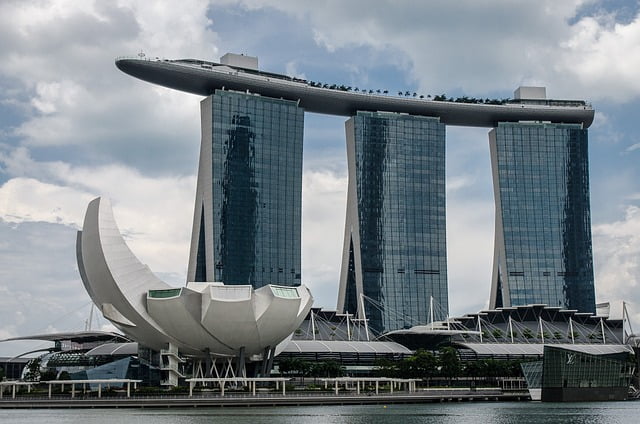A top pick family-friendly holiday destination in Asia.
Similar to most destinations in Southeast Asia, Singapore owns a typical tropical climate—hot and humid. Lucky enough, this warm weather continue throughout the year, maintaining a consistent daily temperature of around 27 degrees Celsius. This consistency is excellent news for travellers and locals, as it provides flexibility in planning visits to Singapore, making virtually any time a suitable and enjoyable choice.
Tip : between July and August is Singapore’s slowest time for tourism and flight tickets are cheaper during these months.
Rain & Humidity
Keep in mind that, despite the moderate and warm climate, rainfall is a nearly daily occurrence in the City of the Lion, even out of monsoon period. Travellers are advised to bring umbrella, along with sunscreen and a hat, on trip to Singapore. Lucky enough, tropical showers are typically short not widespread and can offer a refreshing break from the sun’s heat. The relative humidity across the island remains consistently high, ranging from 70% to 80%. April is the warmest month, January is the coolest, and November is the wettest.
Monsoon seasons
Plan wisely on your trip. Take note that monsoon season occurring from December to March, and from June to September.
Northeast monsoon (December, January, February, March)
Thankfully, it has a ‘wet phase’ as well as a pleasant ‘dry phase’. The ‘wet phase’ lasts from December to January where there is a continuous moderate to heavy rainfall in the afternoons and evenings and probably not very easy for travelling.
Visiting museums, art galleries and indoor theme parks would be pleasurable activities to do during this time and fortunately for travellers, Singapore boasts these cultural attractions in wonderful abundance.
The ‘dry phase’ from February to March is a fine time to explore Singapore with little to no rain and cool temperatures during these months.
Southwest monsoon (June, July, August, September)
This is a total different experience. Thunderstorm activity and rain showers occur before dawn until around midday, but the thunderstorms only last around half an hour.
During these months, ‘Sumatra squalls’ are a common phenomenon. ‘Sumatra squalls’ are a line of thunderstorms that develop over Sumatra at nighttime, shift to the west coast peninsula of Malaysia and usually reach Singapore around morning. This results in heavy rain that falls for a couple of hours and is trailed by cloudy, overcast skies and light afternoon rain showers.
Inter-monsoon period (April, Mai & October, November)
Serves as a transition between the Northeast Monsoon season and the Southwest Monsoon season, taking place from April to May and October to November. In these months, Singapore encounters moderate afternoon and early evening rain showers, accompanied by warm and comfortable temperatures.
May to July is generally hotter and drier weather, while November to January sees more frequent spells of rain.
Haze (August, September, October)
Travelers should also be aware of the Southeast Asian haze, typically prevalent from August to October. During this period, Singapore can be shrouded in a smoky haze caused by agricultural burning and forest fires in Indonesia. The pollution is transported to Singapore by south-easterly or south-westerly winds, posing health risks and is advisable to be avoided.
Click here to check out posts on Singapore Travel Guide. Fun travel !
